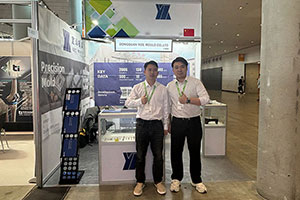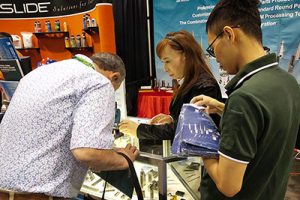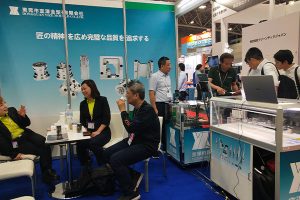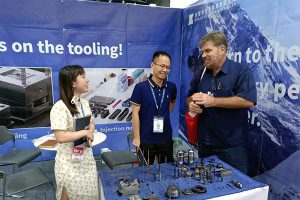Unveiling the Causes of Tungsten Carbide Product Deformation
I. Introduction Tungsten carbide, as an outstanding high-performance cemented carbide material, boasts characteristics such as high hardness, high strength, and excellent wear resistance. It finds extensive applications in various fields […]
I.はじめに
Tungsten carbide, as an outstanding high-performance cemented carbide material, boasts characteristics such as high hardness, high strength, and excellent wear resistance. It finds extensive applications in various fields including metal processing, mold manufacturing, and aerospace. However, in practical use, tungsten carbide products often suffer from deformation issues. This not only affects the quality and performance of the products but also poses potential threats to the safe operation of equipment. Therefore, conducting in-depth analysis and research on the causes of tungsten carbide product deformation is of great significance for improving product quality and extending their service life. This article will elaborate on the causes of tungsten carbide product deformation from multiple aspects, aiming to provide references for researchers and engineers in related fields.
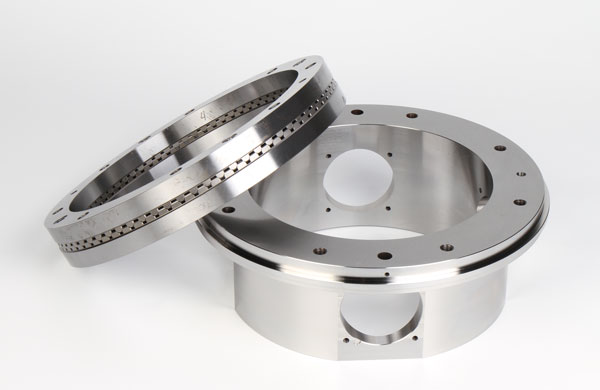
II. In-depth Analysis of the Causes of Tungsten Carbide Product Deformation
Carbon Gradient
During the processes of dewaxing, presintering, and sintering of tungsten carbide, the carbon content in the product changes, leading to the formation of a carbon gradient within the tungsten carbide product. Specifically, in an H2 sintering atmosphere, if the concentration of CXHY compounds is too high and there is an excessive amount of carbon in the filler, especially for large products or those with a “long and flat” shape, uneven “decarburization” or “carburization” occurs in different parts. This results in different sequences and degrees of shrinkage in various parts, ultimately causing deformation and bending of the product. For example, in wear-resistant tungsten carbide products, due to uneven “decarburization” or “carburization” in different parts, a carbon gradient forms within the product. The carbon-deficient areas have a higher solidification temperature and solidify first during cooling, while the high-carbon areas solidify last. As a result, the liquid phase moves towards the areas that solidify first, and under the action of shrinkage, the product is bent. In particular, for long strips, the high-carbon side becomes concave, and the low-carbon side becomes convex.
当社の工場事業:超硬部品、金型部品、医療用射出成形金型、精密射出成形金型、テフロンPFA射出成形、PFAチューブ継手。電子メール:[email protected],whatsapp:+8613302615729。
Cobalt Gradient
During vacuum sintering of tungsten carbide, if the wettability of cobalt on the surface of the graphite crucible is poor and the affinity decreases, the cobalt liquid will move upwards, increasing the surface tension of the upper surface of the product and decreasing the surface tension of the lower surface, causing the product to bulge upwards. Conversely, if the wettability of cobalt on the graphite crucible is good and the affinity increases, the cobalt liquid will move downwards, increasing the surface tension of the lower surface of the alloy and causing the product to sag downwards. These phenomena can all lead to deformation of tungsten carbide products. In addition, after being heated and melted, cobalt usually flows towards areas with higher temperatures. That is, the cobalt content in the parts of the product with higher temperatures will increase. The greater the temperature gradient change, the larger the cobalt distribution gradient formed, and the more severe the product deformation will be.
Temperature Gradient
The presence of a temperature gradient during the manufacturing process of tungsten carbide products is also an important cause of product deformation. Due to the uneven temperature distribution in different parts of the product, the degree of shrinkage in different parts varies, leading to product deformation. Moreover, during the heat treatment process, if the heating and cooling rates are too fast, it can also cause a large temperature gradient within the product, further triggering deformation.
Density Gradient of Pressed Products
During the pressing process of tungsten carbide, factors such as force attenuation, uneven charging, uneven bulk density of the mixture, and complex product shapes can lead to the formation of a density gradient within the tungsten carbide product. The parts with higher density have less shrinkage, while the parts with lower density have more shrinkage, thus affecting product deformation and bending. In addition, factors such as improper crucible loading and coefficient of shrinkage may also cause product deformation.
External Factors
In addition to the above internal factors, external factors can also cause deformation of tungsten carbide products. For example, excessive use, exposure to external impacts, and exposure to high-temperature or humid environments can all lead to product deformation. In practical use, these external factors should be avoided as much as possible to minimize their impact on the products.
III. Conclusions and Recommendations
In summary, the causes of tungsten carbide product deformation mainly include carbon gradient, cobalt gradient, temperature gradient, density gradient of pressed products, as well as external factors. To reduce the deformation problems of tungsten carbide products, improvements can be made from the following aspects:
Optimize the Production Process
By adjusting production process parameters such as sintering temperature, time, and pressure, the carbon gradient, cobalt gradient, and temperature gradient within the product can be reduced.
Improve Product Quality
Strengthen quality control of raw materials to ensure the uniformity and stability of the products. At the same time, improve the processing accuracy and stability of key processes such as pressing and sintering.
Strengthen Use and Maintenance
During use, avoid adverse factors such as excessive use and exposure to external impacts. Regularly inspect and maintain the products to promptly detect and address deformation issues.
Through the implementation of the above measures, the deformation problems of tungsten carbide products can be effectively reduced, and the quality and performance of the products can be significantly improved.
Professional tungsten carbide processing manufacturer – Dongguan Yize Mold provides a range of products including tungsten carbide molds, tungsten carbide processing, tungsten carbide rolls, tungsten carbide blades, cemented carbide, and tungsten carbide punches. Welcome to call for consultation at +86 13302615729 (same number for WeChat and Whatsapp) to obtain more information.


